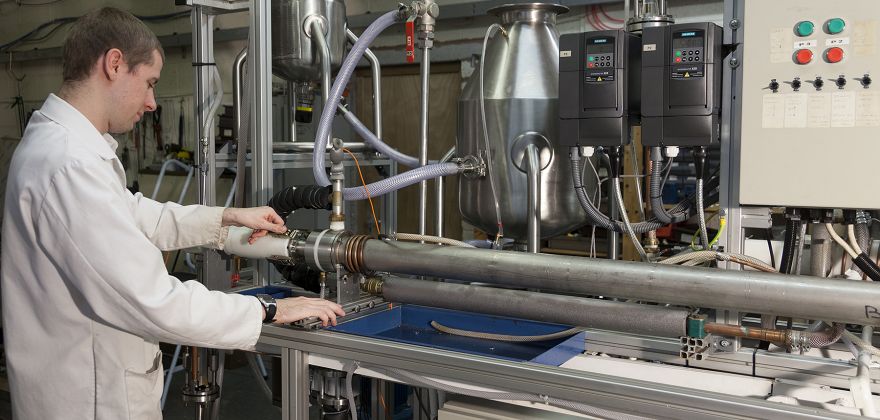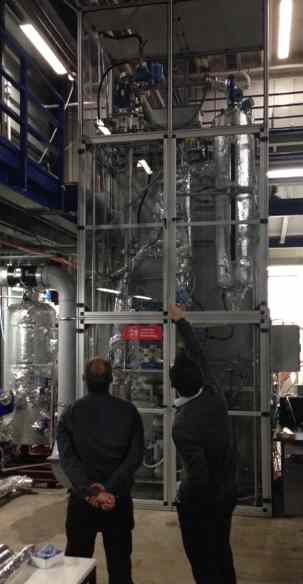Research & Development Update

Over the last year (2017), CALGAVIN® has been involved in a number of different research activities in the field of heat transfer enhancement. There has been extensive testing undertaken to optimise our hiTRAN® technology further in the field of low Reynolds number fluids.
Testing with Low Reynolds Numbers
The specially designed test facility, for these flow conditions, has been in operation for over one year, and the results will be implemented in future releases of our hiTRAN.SP Software. Results show that our hiTRAN Thermal System Technology can reliably be used down to single figure Reynolds numbers. Even under those flow conditions, several fold increase, in tube side heat transfer compared to the empty tube is observed, and this opens up opportunities in high viscous flow areas.
In co-operation with the Institute for Chemical and Thermal Process Engineering (ICTV) at Braunschweig University of Technology in Germany, the research showed exciting results in the field of enhanced condensation in vertical downflow condensers. In these tests, condensation of Hexanol vapour with varying contents of non-condensable Nitrogene was investigated.
During these experiments an existing emerging technology, to measure bulk temperature was applied. This is based on a fibre-optic sensing tool making incremental temperature measurements in the centre of the tube.
This technique allows concise detailed information about the condensing behaviour, along the condensation path. It allowed new insights for condensation in empty tubes but is particularly useful when investigating enhanced condensation with hiTRAN Thermal Systems.
In the photo, the test facility comprising a steam generated pillow plate Hexanol thermosiphon reboiler and a water cooled downflow condenser, is shown.

For safety reasons, the test rig is fully enclosed and equipped with state of the art measuring technique. Initial results have shown substantial improvements when using hiTRAN thermal systems.
Some of these findings were presented at the 15th UK Heat Transfer Conference in London (4th and 5th September 2017)
hiTRAN Thermal Systems in Thermosiphon Reboilers
In a separate project, at the ICTV, hiTRAN Thermal Systems being used in Thermosiphon Reboilers are being investigated. Again the new measurement technique is being used to obtain additional temperature information along the flow path.
The aim is to use this information to determine the length of the so called ‘sub cooled length’ before the onset of boiling in those applications. In case of extensive sub cooled length, hiTRAN Thermal Systems can be used in order to reduce these lengths, increasing the portion of tube available for boiling.
Computational Fluid Dynamics (CFD)
Over the last year, CALGAVIN also invested in extending its Computational Fluid Dynamics (CFD) capabilities, with CFD proving an important tool to understand the underlying mechanisms in heat transfer optimisation.
We have also noticed an increased uptake of CFD engineering service in heat exchanger design and especially heat exchanger troubleshooting. In the autumn a series of webinars and tutorials, explaining the underlying mechanism for enhancements in single and two phase flow applications are planned. Those webinars will be based on the results of past and on-going research into those areas.
Conferences
CALGAVIN also presented and have attended different research conferences in the field of heat transfer. At the Heavy Oil conference in Bahrain, it was evident that findings from our low Reynolds number research can be used for applications in this area.
Dr Peter Drögemüller our R&D manager will also be present at the annual HTRI meeting in Ottawa to learn about the latest research in empty tube heat transfer.
It is also worth making a note for the upcoming HEE conference in Malaysia, that CALGAVIN will conduct a one day workshop, discussing in detail the full research results, combined with case studies in revamping and new design scenarios.




